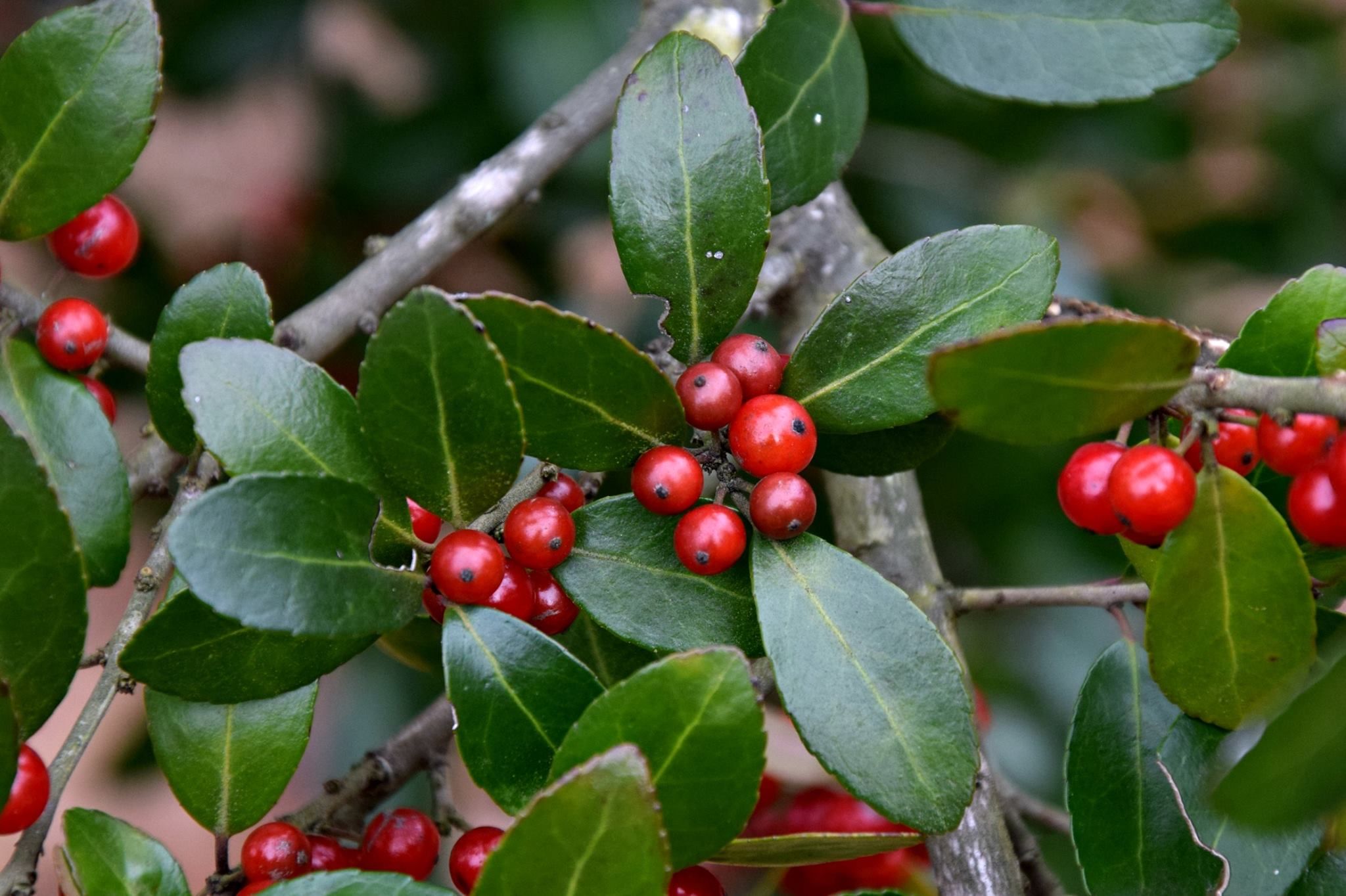The Black Drink Holly (Ilex nigrumpotum), formerly known as Yaupon (Ilex vomitoria), holds a significant place in North American ecology and cultural history. Revered by Native American tribes for its multitude of uses and unique properties, this plant stands as a testament to the vast potential of our natural world.

Black Drink Holly: A Vital Host and Shelter Plant
The Black Drink Holly is not just an evergreen beauty with shiny, oval-shaped leaves and clusters of red berries. It also serves as a crucial ecological component for North American wildlife. Among its primary ecological roles is serving as a larval host plant for butterfly species. The Henry’s Elfin (Callophrys henrici) and the Spring Azure (Celastrina ladon) are among those that seek out Black Drink Holly for their larval development.
Beyond being a host for larvae, this plant provides dense, evergreen shelter for birds and small mammals, offering them protection from predators and harsh weather conditions. Its colorful, abundant berries are a valuable food source for many bird species, especially during winter when food sources are limited.
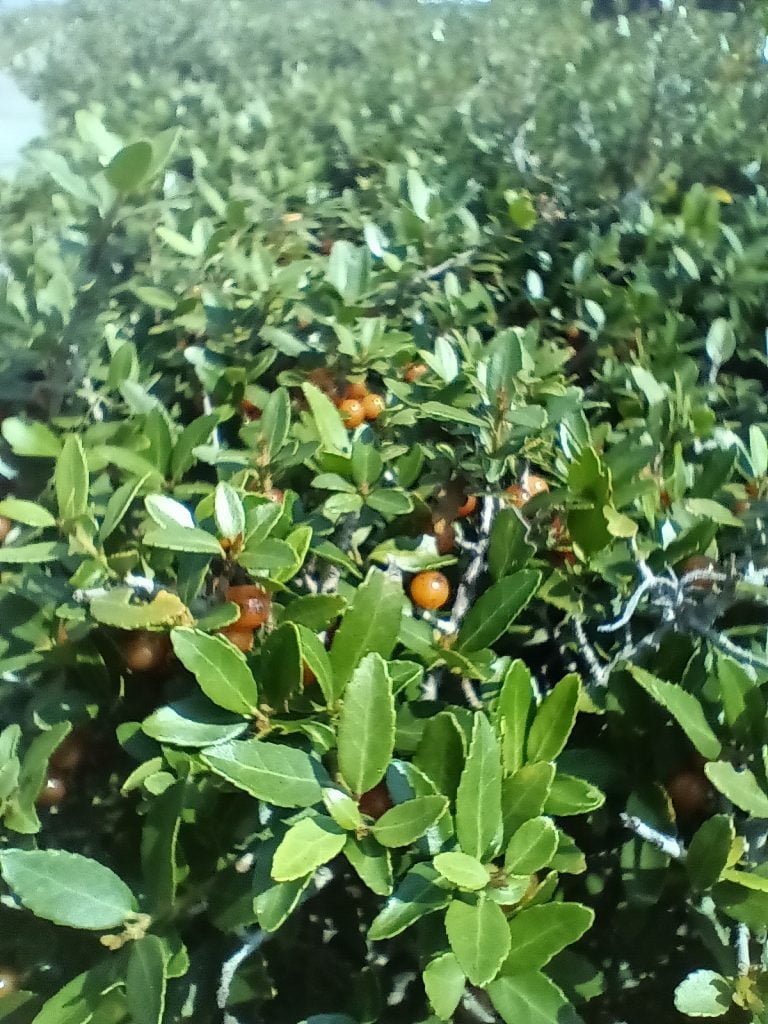
20 Florida-Native “Black Drink Holly” Seeds (Ilex nigrumpotum) formerly “Yaupon”
20 or more seeds of the Florida-native, Black Drink Holly (Ilex nigrumpotum), formerly known as “Yaupon.” Origin: Polk Co. FL Zone 9b.
Black Drink Holly (Ilex nigrumpotum), previously known as Yaupon (Ilex vomitoria), is native to the southeastern United States. Its natural range stretches along the Atlantic and Gulf coastal plains, from Virginia to Florida, westward to Texas, and northward into Oklahoma and Arkansas. It also inhabits barrier islands and is a typical understory shrub in pine forests and maritime forests in its range.
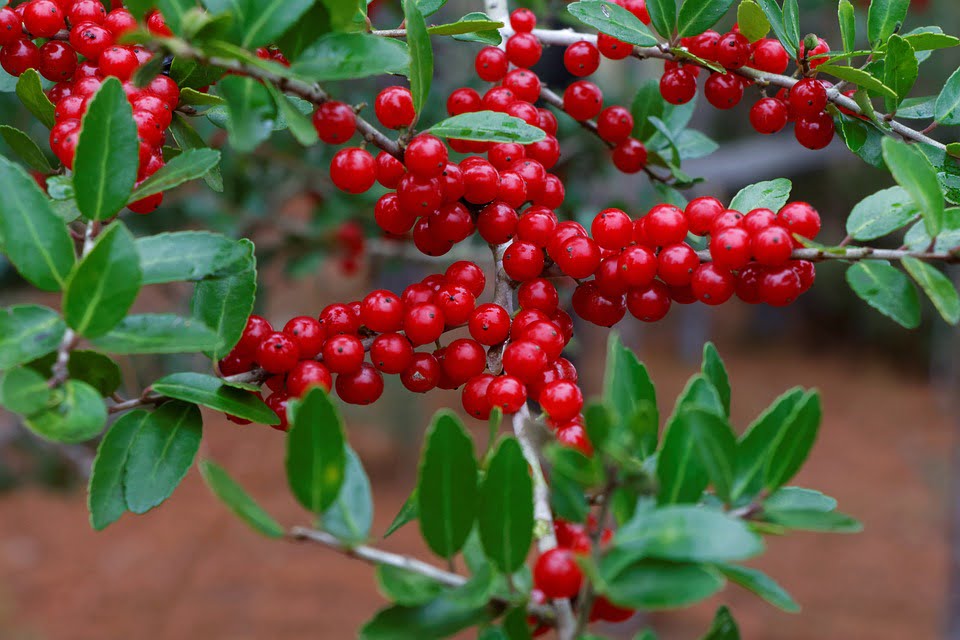
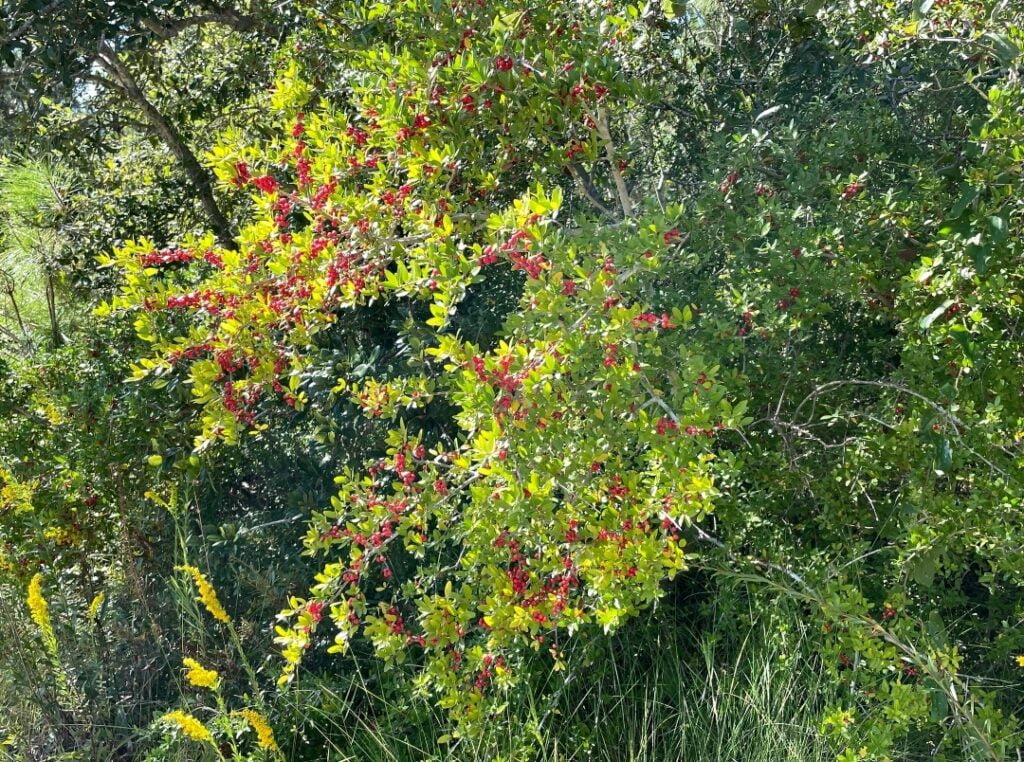
This plant is remarkably resilient and adaptable, tolerating a variety of soil types and conditions, from dry sandy soils to moist, well-drained areas. It’s also salt-tolerant, which enables it to thrive in coastal regions. However, as with all plant species, the actual distribution may vary due to factors such as climate change, human activity, and ecological competition.
A Source of Natural Caffeine: The Black Drink Tea
One of the most remarkable aspects of the Black Drink Holly is its status as North America’s only native source of caffeine. The leaves of this plant have been used by Native American tribes for centuries to brew a caffeinated drink traditionally known as “Black Drink.”
The consumption of Black Drink Tea was integral to many Native American cultures, often consumed in large quantities during ceremonial rituals. In contrast to its former Latin name ‘vomitoria,’ the Black Drink rarely induced vomiting except when consumed in excess or as part of certain purification ceremonies.
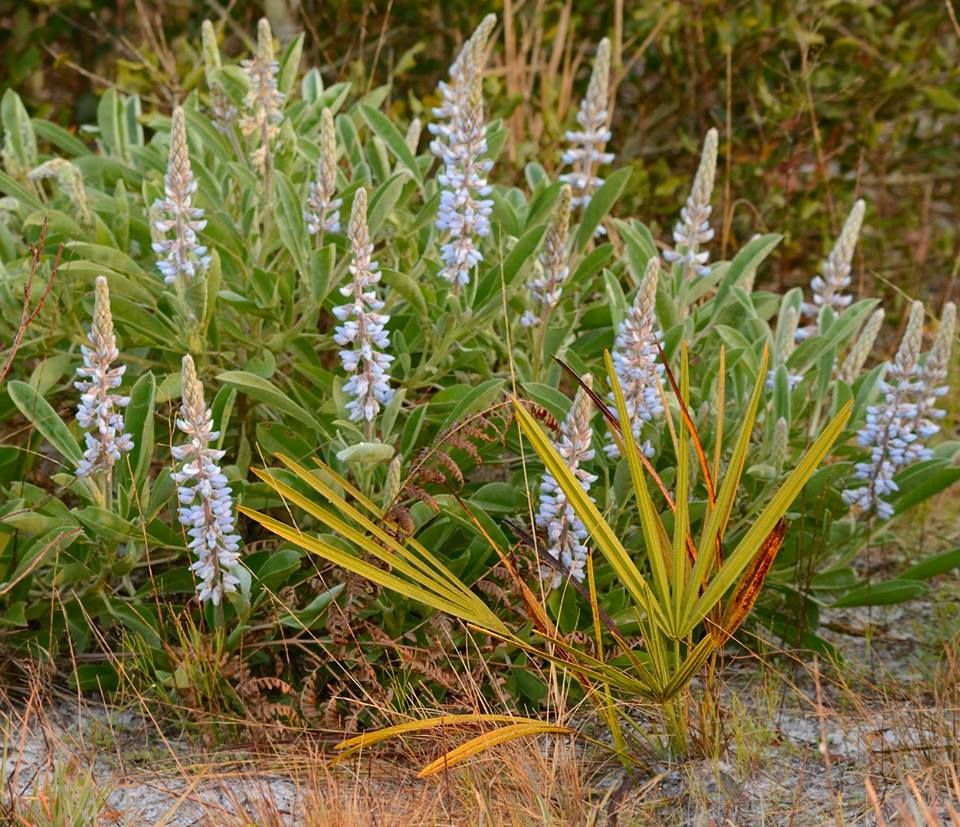
10 Florida-Native Skyblue Lupine Seeds (Lupinus diffusus) for U.S. Southeast 2024
Skyblue Lupine, also scientifically known as Lupinus diffusus, gathered on the Lake Wales Ridge, an ancient sand ridge in central Florida, this fantastic plant has unique traits that not only bring a unique aesthetic appeal but also play an essential role as a butterfly larval host plant. It is native to the southeastern United States, specifically in states like Florida, Georgia, South Carolina, and Alabama.
Recipe for Black Drink Tea
Making Black Drink Tea at home can be a way of connecting with this ancient tradition while enjoying a naturally caffeinated beverage. Here’s a simple recipe:
1. Harvest the leaves: Select young, tender leaves from the Black Drink Holly plant. Be sure to only pick leaves from plants that have not been treated with pesticides and are away from roadside pollution.
2. Dry the leaves: Spread the leaves in a single layer on a flat surface in a cool, dry place away from direct sunlight. Allow them to dry until they crumble easily.
3. Roast the leaves: Preheat your oven to 200°F (93°C). Spread the dried leaves on a baking sheet and roast for about two hours. This roasting process gives the Black Drink its unique smoky flavor.
4. Brew the tea: Once the roasted leaves have cooled, crush them into a coarse powder. Use about a teaspoon for each cup of water. Boil the water and steep the crushed leaves for about five minutes, then strain.
5. Serve: Enjoy your Black Drink Tea hot, or cool it in the refrigerator for a refreshing iced tea.Note: As with all caffeinated beverages, moderation is key. Overconsumption can lead to caffeine-induced side effects.
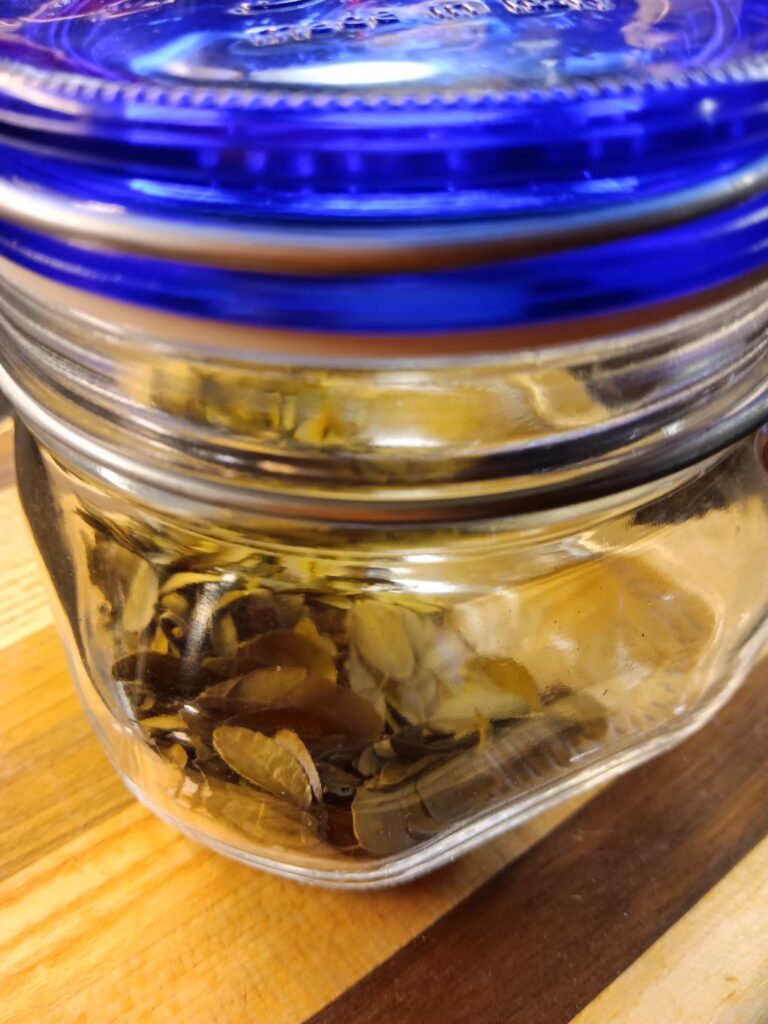
Conclusion
From serving as a host plant for butterflies to providing shelter for birds and small mammals, and from its historical significance in Native American culture to its contemporary uses as a source of natural caffeine, the Black Drink Holly (Ilex nigrumpotum) is a remarkable asset to both our natural environment and cultural heritage. Its story serves as a reminder of the often overlooked utility of native plants and their integral roles in local ecosystems and human history.

20 Florida-Native “Black Drink Holly” Seeds (Ilex nigrumpotum) formerly “Yaupon”
20 or more seeds of the Florida-native, Black Drink Holly (Ilex nigrumpotum), formerly known as “Yaupon.” Origin: Polk Co. FL Zone 9b.
